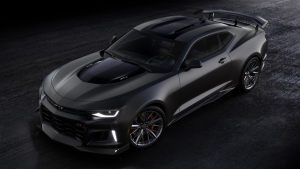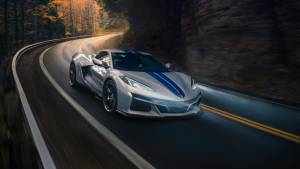2012 Chevrolet Captiva in India road test
.jpg)
The new Captiva is a significantly different vehicle compared to the previous generation SUV. While it does look remarkably different it isn't an all new vehicle, GM choosing to rework a few aggregates rather than invest in changing all of it. So while you do get an SUV that looks quite different when viewed from the front the headline grabber is its engine. Specifically the new 2.2-litre diesel which is offered only with the top of the line LTZ variant, with the rest of the variants sticking to the older 2.0-litre diesel.
It isn't often that you hear of any manufacturer offering a variant with more power and torque, the more popular trend is to just load it with more kit, so the Captiva LTZ is a pleasing surprise. The facelift makes the Captiva look bulkier and more aggressive and in that way it freshens itself up. A larger grille, bigger front bumper, slimmer headlamps and minor detailing are the instantly noticeable changes. Inside the cabin there isn't much that's new and while we were expecting to see a big display unit housing a navigation system integrated in the dashboard, it wasn't there. You still get the same amount of comfort and luxurious detailing as before and the Captiva still is one of the few SUV's in this segment to seat seven passengers which is a big bonus for the package. Are there any extras you get with the changes? Yes and it's critical stuff like more airbags and air-con vents for the third row passengers.
Coming to the most important aspect of the LTZ, its engine. This engine is a bumped up version of the 2.0-litre diesel, with displacement rising up 2231cc. This engine belongs to GM's Family Z engines also known as the VCDi engine featuring inline four architecture. It uses a common rail turbo running 1800 bar injection pressures and a variable geometry turbocharger. This helps generate more power, you get 185PS of it at 3800rpm and ridiculously more torque, at 414Nm that's nearly a 100Nm more than the other engine. Distributing that torque is a six-speed standard torque convertor automatic through an on demand 4WD system. This immediately makes the Captiva LTZ a more punchier SUV to drive as compared to its lesser powerful sibling. It also means driveability has improved as well as refinement. What you don't get is turbo lag or at least very little of it and that is a good thing. The turbo kicks in at about 1900rpm, but full boost kicks in around 300rpm later. The LTZ does not seem too quick, and while it does 100kmph in just 10.22 seconds (over three seconds quicker than the 2.0-litre engine) I did get this feeling that it could be quicker if the transmission shifted gears faster. As it happens this transmissions ratios are tuned to provide better efficiency and not performance. Keep the Captiva in the power band and it's a quick SUV, even the kick downs are fast, 40-100kmph taking just 8.21 seconds.
On the fuel efficiency front the Captiva is quite competent. In the city she covers a distance of 10.9km on a single litre of diesel stretching it out to 17.1kmpl on the highway.
Overall this variant of the Captiva is the one to look out for. It has matured wisely and knows how to appeal to a younger buyer and that is its biggest change. I recollect a time not so long ago when we distinctly mentioned that the Captiva would appeal to someone older. The Captiva has finally come around to bite us in the ass, with more firepower!














